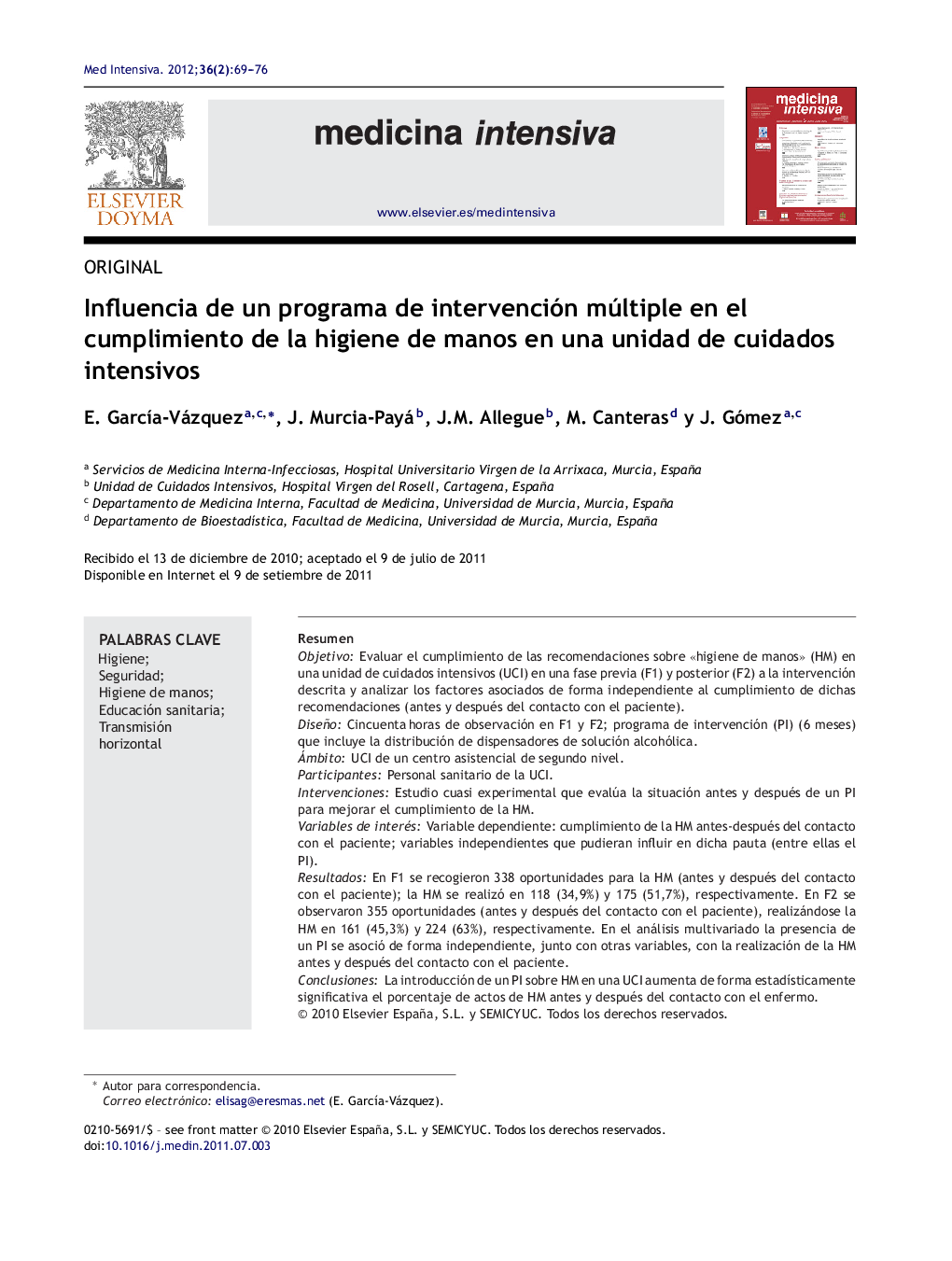| Article ID | Journal | Published Year | Pages | File Type |
|---|---|---|---|---|
| 3112996 | Medicina Intensiva | 2012 | 8 Pages |
ResumenObjetivoEvaluar el cumplimiento de las recomendaciones sobre «higiene de manos» (HM) en una unidad de cuidados intensivos (UCI) en una fase previa (F1) y posterior (F2) a la intervención descrita y analizar los factores asociados de forma independiente al cumplimiento de dichas recomendaciones (antes y después del contacto con el paciente).DiseñoCincuenta horas de observación en F1 y F2; programa de intervención (PI) (6 meses) que incluye la distribución de dispensadores de solución alcohólica.ÁmbitoUCI de un centro asistencial de segundo nivel.ParticipantesPersonal sanitario de la UCI.IntervencionesEstudio cuasi experimental que evalúa la situación antes y después de un PI para mejorar el cumplimiento de la HM.Variables de interésVariable dependiente: cumplimiento de la HM antes-después del contacto con el paciente; variables independientes que pudieran influir en dicha pauta (entre ellas el PI).ResultadosEn F1 se recogieron 338 oportunidades para la HM (antes y después del contacto con el paciente); la HM se realizó en 118 (34,9%) y 175 (51,7%), respectivamente. En F2 se observaron 355 oportunidades (antes y después del contacto con el paciente), realizándose la HM en 161 (45,3%) y 224 (63%), respectivamente. En el análisis multivariado la presencia de un PI se asoció de forma independiente, junto con otras variables, con la realización de la HM antes y después del contacto con el paciente.ConclusionesLa introducción de un PI sobre HM en una UCI aumenta de forma estadísticamente significativa el porcentaje de actos de HM antes y después del contacto con el enfermo.
ObjectiveTo assess compliance with hand hygiene (HH) in ICU workers before (P1) and after (P2) implementation of a HH promotion program and distribution of an alcoholic solution for HH, and to analyze factors independently associated to HH before and after patients care.DesignFifty hours of observational evaluation were carried out during each period of the study (P1 and P2); the number of opportunities for HH (before and after patients care) was registered. Educational program (6 months): poster campaign, educational meetings with staff about HH, and the provision of alcohol hand rubs.SettingICU in a secondary level hospital.ParticipantsHealthcare workers in the ICU.InterventionsA quasi-experimental design was used to evaluate compliance with HH before and after implementation of the educational program.VariablesDependent variable: HH compliance before-after patients care; independent variables that might be associated to compliance (including the educational program).ResultsIn P1 there were 338 opportunities for HH both before and after patients care, versus 355 in P2 (before and after patients care). The hand-washing rate was significantly higher in P2 than in P1 (prior to patient care: 45.3% and 34.9%, respectively, and after patient care: 63% and 51.7%, respectively). In the multivariate analysis, the educational program, together with other variables, was significantly associated to HH before and after patients care.ConclusionThere was a significant increase in compliance with hand hygiene among the ICU personnel during the educational phase, both before and after patients care.
